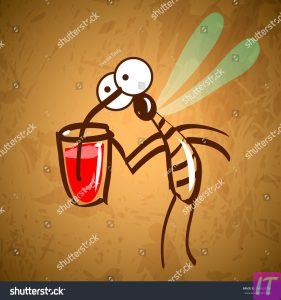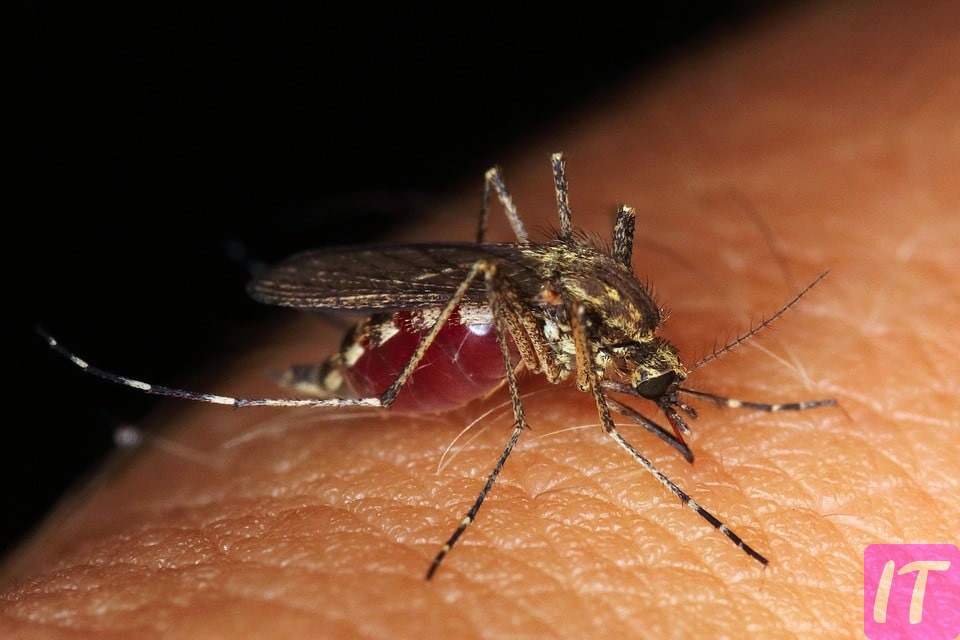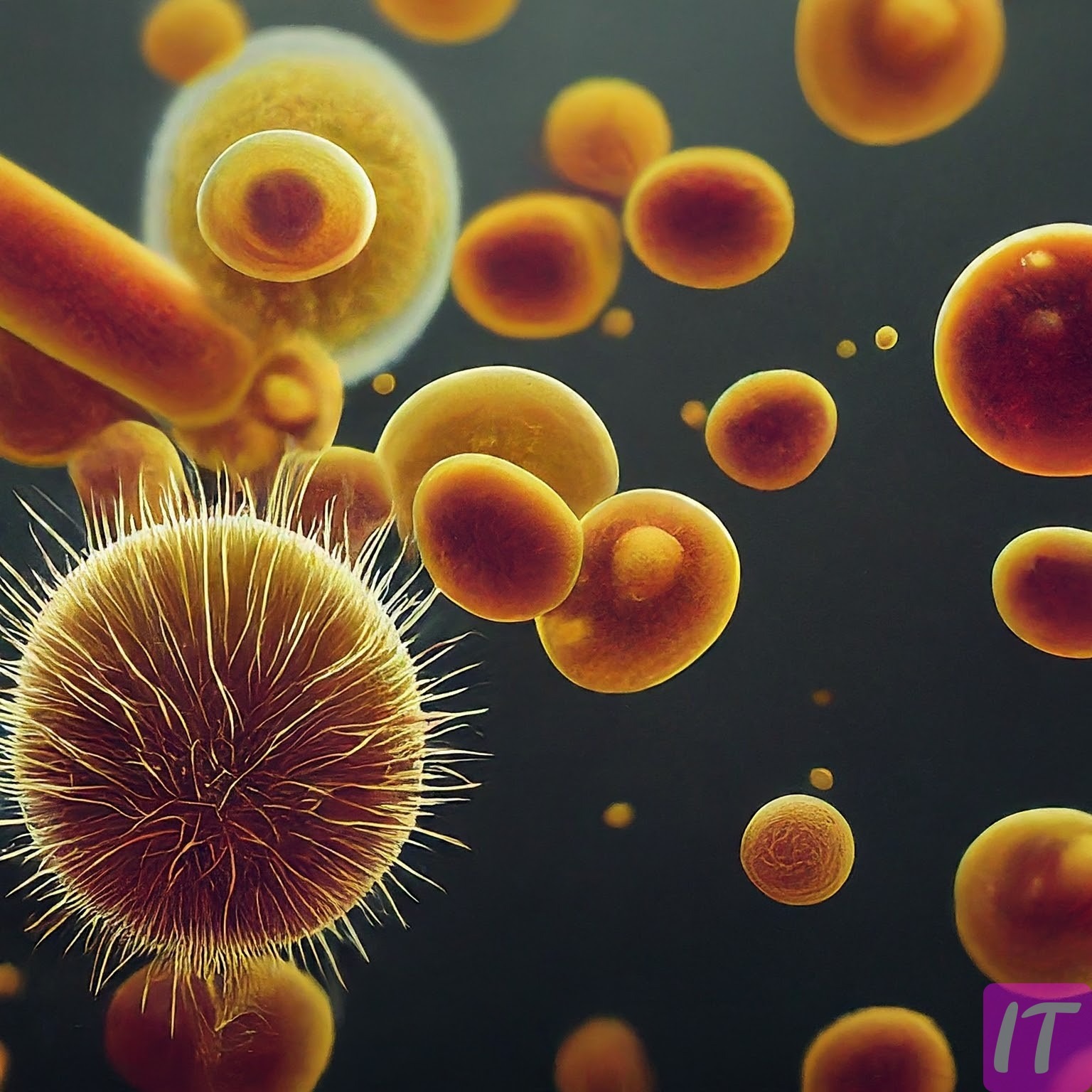It’s astonishing to consider that only female mosquitoes require a blood meal to reproduce, driven by their need for protein and iron to develop eggs. This vital necessity transforms these minute insects into potent vectors of disease. Intriguingly, the quest for blood has placed mosquitoes at the center of numerous studies exploring disease transmission and control strategies.
The practice of blood-feeding can be traced back millions of years, evolving as a survival strategy for mosquitoes. The protein-rich blood enables successful reproduction, leading to their proliferation across diverse habitats. Remarkably, a single female mosquito can lay up to 300 eggs after a blood meal, underscoring the critical role of blood in their life cycle.
Why did mosquitoes drink blood?
Female mosquitoes drink blood for a crucial reason: they need the protein to develop their eggs. Blood provides essential nutrients like iron and amino acids, which are vital for the reproductive process. Without these nutrients, a female mosquito cannot produce healthy eggs. Male mosquitoes, on the other hand, do not drink blood at all. They survive solely on nectar and water.
Over millions of years, mosquitoes have evolved to become effective blood-feeders. This adaptation has enabled them to thrive in a variety of environments worldwide. Their specialized mouthparts, called proboscis, allow them to pierce the skin of their hosts and extract blood efficiently. This biological feature is unique and showcases the complexity of mosquito evolution.
Interestingly, not all mosquitoes drink human blood. Some species prefer birds, reptiles, or other small mammals. However, those that do feed on humans are significant because they can transmit diseases. Diseases like malaria, dengue fever, and Zika virus are spread primarily through mosquito bites, making them a public health concern globally.
The act of blood-feeding is not just about nourishment; it’s also about survival and reproduction. When a female mosquito drinks blood, she can lay hundreds of eggs, continuing the life cycle. Understanding why mosquitoes drink blood helps scientists develop better strategies for controlling mosquito populations and reducing disease transmission.
The biological necessity of blood for egg development
Female mosquitoes need blood to produce eggs because it provides them with essential nutrients. Blood contains proteins and iron, which are vital for developing healthy eggs. Without these nutrients, the eggs would not mature properly. This is why only female mosquitoes bite and drink blood. Interestingly, they can also feed on nectar, but it doesn’t provide the necessary proteins.
The process begins when a female mosquito pierces the skin of a host with her proboscis. As she draws blood, her salivary glands secrete enzymes to prevent clotting. This allows the mosquito to gather a substantial amount of blood quickly. Each blood meal can enable a female mosquito to lay as many as 300 eggs. The entire process showcases the complexity of their reproductive cycle.
Once the mosquito has ingested enough blood, she will rest for a few days while her body processes the nutrients. During this time, the proteins and iron are converted into egg yolk, nourishing the developing embryos. This rest period is crucial for the success of future generations. The mosquito’s ability to reproduce is directly tied to the quality and quantity of the blood meal.
The importance of blood-feeding makes mosquitoes effective vectors for diseases. As they seek out blood from different hosts, they can easily transmit viruses and parasites. This biological necessity highlights the challenges in controlling mosquito populations and reducing disease spread. Scientists continue to explore ways to interrupt this cycle and protect public health.
The Evolution of Blood-Feeding in Mosquitoes
The evolution of blood-feeding in mosquitoes is a fascinating journey. Originally, mosquitoes likely fed only on nectar and other plant-based sources. Over time, some species adapted to feed on blood, which provided a richer source of nutrients. This adaptation allowed them to thrive in various environments. The shift from plant to blood meals marked a significant evolutionary step.
Genetic changes played a crucial role in this evolution. Mosquitoes developed specialized mouthparts to pierce the skin of their hosts. These mouthparts include the proboscis, which is adept at locating blood vessels. Additionally, they evolved enzymes in their saliva to prevent blood from clotting during feeding. These adaptations increased their survival and reproductive success.
As mosquitoes expanded their range, different species adapted to feed on various hosts. Some prefer humans, while others target birds, reptiles, or mammals. This adaptability has allowed mosquitoes to become one of the most widespread and resilient insect families. The diverse diet of mosquitoes illustrates their incredible ecological flexibility.
This evolution has also had significant implications for public health. Blood-feeding mosquitoes can transmit diseases such as malaria, dengue fever, and Zika virus. Understanding their evolutionary history helps scientists develop new methods to control mosquito populations. Research continues to uncover the genetic and behavioral traits that define their blood-feeding habits, offering hope for better disease prevention strategies.
The Role of Blood in Mosquito Reproduction
Blood plays a vital role in mosquito reproduction. Female mosquitoes need a blood meal to develop their eggs. The proteins and iron in the blood are crucial for egg maturation. Without these nutrients, the eggs can’t develop properly. This is why female mosquitoes actively seek out blood sources.
Once a female mosquito has ingested blood, her body starts to process it. The blood is broken down into nutrients that are used to nourish the developing eggs. This process takes a few days, during which the mosquito rests. After this period, she’s ready to lay her eggs. She typically lays them in stagnant water, which provides a safe environment for the eggs to hatch.
The number of eggs a mosquito can lay depends on the amount of blood she consumes. A well-fed mosquito can lay up to 300 eggs in one cycle. After laying eggs, the mosquito will seek another blood meal to repeat the process. This cycle continues throughout her lifespan, allowing for multiple generations to develop.
Given the importance of blood for reproduction, mosquitoes have evolved various techniques to efficiently locate and extract blood. They use their proboscis to pierce the skin and access blood vessels. Additionally, their saliva contains enzymes that prevent the blood from clotting, allowing them to feed more effectively. These adaptations ensure that mosquitoes can reproduce successfully.
This blood-feeding behavior has significant implications. As mosquitoes seek blood, they can transmit diseases from one host to another, including humans. Understanding the role of blood in mosquito reproduction helps in developing better control strategies. Scientists can target these specific aspects to reduce mosquito populations and prevent disease spread.

Implications of Blood-Feeding for Disease Transmission
Blood-feeding mosquitoes are major vectors for various diseases. When a mosquito bites an infected host, it can pick up pathogens. These pathogens are then transmitted to the next host the mosquito feeds on. This process can spread diseases rapidly within populations. It makes controlling mosquito populations crucial for public health.
The most well-known disease transmitted by mosquitoes is malaria. Malaria is caused by Plasmodium parasites, which mosquitoes carry from person to person. Another significant disease spread by mosquitoes is dengue fever. Dengue is caused by a virus and can lead to severe flu-like symptoms. The widespread presence of these diseases highlights the dangers of mosquito bites.
Mosquitoes are also responsible for the transmission of the Zika virus. Zika infection can cause birth defects when contracted by pregnant women. Along with Zika, mosquitoes spread the West Nile virus and chikungunya. These diseases have different effects but share the common factor of mosquito transmission. The global impact of these illnesses is substantial.
The financial burden caused by mosquito-borne diseases is immense. Countries spend millions on healthcare and prevention. Communities invest in mosquito control programs to reduce disease incidence. Strategies include insecticide spraying, removing standing water, and using mosquito nets. These efforts are vital to reducing the spread of disease.
Understanding the implications of blood-feeding helps scientists develop targeted interventions. Research focuses on disrupting the mosquito life cycle and reducing their ability to transmit pathogens. Innovations like genetically modified mosquitoes offer potential solutions. These approaches aim to create long-term impact in the fight against mosquito-borne diseases.
Future Perspective: Control Strategies for Blood-Feeding Mosquitoes
Innovative control strategies are essential for managing blood-feeding mosquitoes. One promising approach is the use of genetically modified mosquitoes. These mosquitoes are engineered to be sterile or carry genes that reduce their ability to transmit diseases. Releasing these modified insects into the wild can help lower mosquito populations over time. This method has shown potential in early trials.
Another strategy is the use of biological control agents. Natural predators like fish, birds, and bats can help keep mosquito numbers in check. Introducing these predators into mosquito-prone areas can effectively reduce mosquito density. Additionally, using bacteria and fungi that specifically target mosquito larvae is gaining traction. These biological agents disrupt the mosquito life cycle, preventing them from reaching adulthood.
Chemical controls remain a widely used method. Insecticides are sprayed in areas with high mosquito activity to kill adult mosquitoes. Larvicides target immature mosquitoes in breeding sites, such as stagnant water. While effective, chemical controls can have environmental impacts. Therefore, they are often used in combination with other control methods for a balanced approach.
Community involvement plays a crucial role in mosquito control. Public education campaigns inform people about preventive measures. Removing standing water, using insect repellent, and installing mosquito nets are simple yet effective actions. Engaging communities ensures that control efforts are sustained and widespread. This collaborative approach enhances the overall effectiveness of mosquito control programs.
Advanced technologies are also being explored. Drones equipped with sensors can identify and map mosquito breeding sites. This information allows for precise targeting of control measures. Moreover, the development of new traps that attract and kill mosquitoes is underway. These technologies promise to make mosquito control more efficient and less labor-intensive.
Frequently Asked Questions
Learn more about the fascinating world of mosquitoes and their blood-feeding habits. Below are some common questions and detailed answers related to this topic.
1. What diseases do mosquitoes transmit?
Mosquitoes are well-known for transmitting several dangerous diseases, including malaria, dengue fever, and Zika virus. These diseases can have severe health impacts on affected individuals, ranging from flu-like symptoms to congenital disabilities in the case of Zika.
Controlling mosquito populations remains crucial for public health due to these risks. Efforts include preventing bites with repellent and nets, as well as community-wide mosquito control programs.
2. How can you prevent mosquito bites?
Preventing mosquito bites involves using insect repellents containing DEET or picaridin on exposed skin and clothing. Additionally, wearing long-sleeved shirts and pants can minimize skin exposure.
At home, use window screens and mosquito nets to keep them out. Eliminating standing water around your property is key since it’s a common breeding ground for mosquitoes.
3. Why do only female mosquitoes bite humans?
Female mosquitoes need the protein from blood to develop their eggs effectively. This requirement drives them to seek out human hosts or other animals for a blood meal.
Males feed on nectar instead, as they don’t need the extra nutrients that females require for reproduction. Thus, female mosquitoes are responsible for most human-mosquito interactions involving bites.
4. What environments do mosquitoes prefer?
Mosquitoes typically thrive in warm climates with plenty of standing water sources like ponds or puddles. Stagnant water is essential because it’s where they lay eggs and undergo developmental stages.
Tropical and subtropical regions often see higher mosquito activity due to optimal conditions. Urban areas with poor drainage systems can also attract large mosquito populations if not managed properly.
5. Are there any natural predators of mosquitoes?
Yes, several natural predators help control mosquito populations, including fish such as guppies and goldfish that eat larvae in water bodies. Birds like swallows also consume adult mosquitoes as part of their diet.
Bats are another effective predator since they hunt at night when many mosquitoes are active. Integrating these predators into local ecosystems can aid in naturally reducing mosquito numbers.
Conclusion
Understanding why mosquitoes drink blood sheds light on their complex biology and impact on human health. These insights are vital for developing effective control strategies. By comprehending their feeding behavior, we can better tackle mosquito-borne diseases.
Continued research and innovative solutions are essential in the fight against mosquitoes. Collaborative efforts across various fields will lead to more effective interventions. With ongoing advancements, we hope to reduce the global burden of mosquito-related illnesses.







